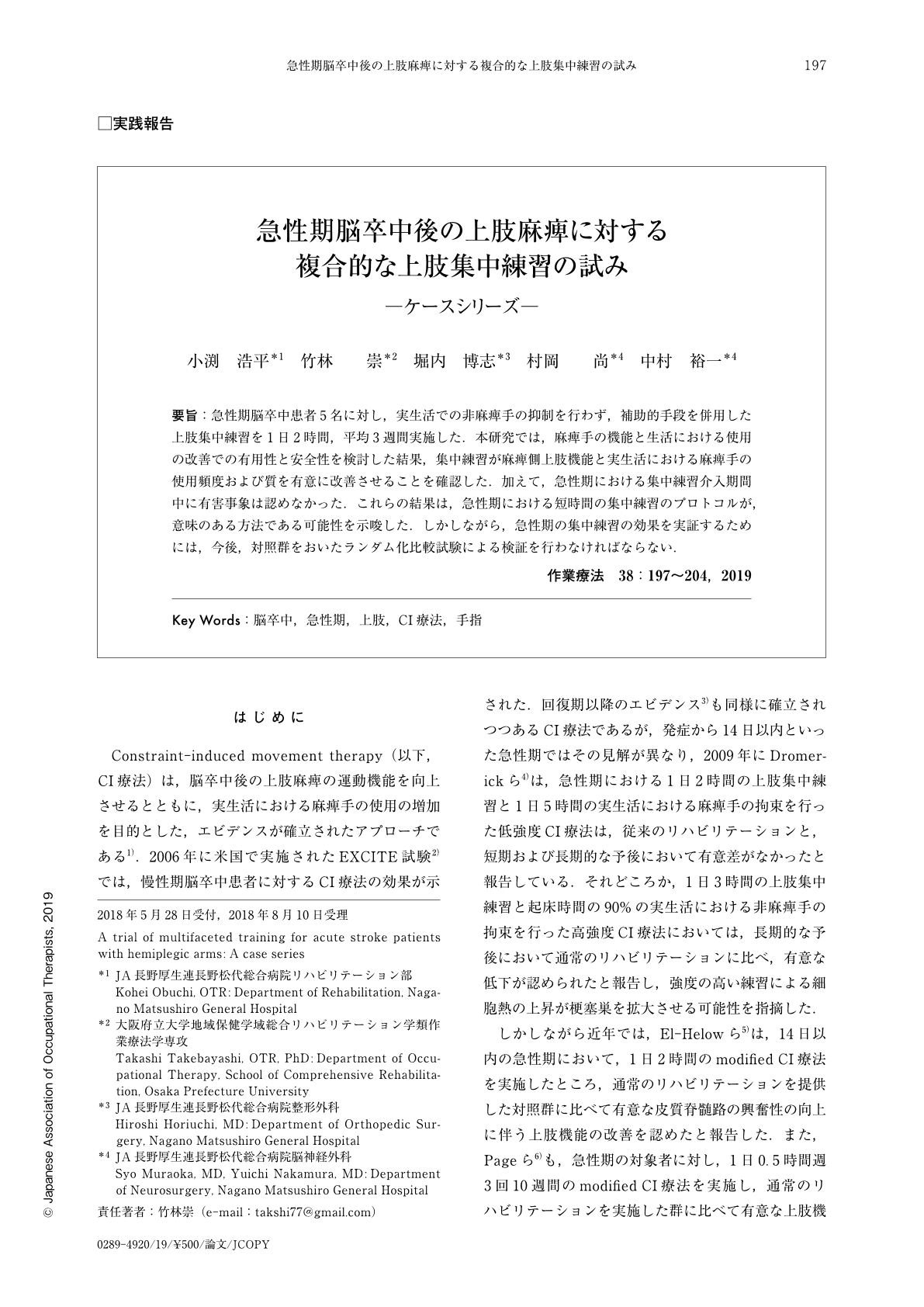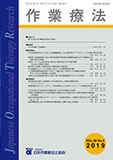Japanese
English
- 販売していません
- Abstract 文献概要
- 1ページ目 Look Inside
- 参考文献 Reference
- サイト内被引用 Cited by
要旨:急性期脳卒中患者5名に対し,実生活での非麻痺手の抑制を行わず,補助的手段を併用した上肢集中練習を1日2時間,平均3週間実施した.本研究では,麻痺手の機能と生活における使用の改善での有用性と安全性を検討した結果,集中練習が麻痺側上肢機能と実生活における麻痺手の使用頻度および質を有意に改善させることを確認した.加えて,急性期における集中練習介入期間中に有害事象は認めなかった.これらの結果は,急性期における短時間の集中練習のプロトコルが,意味のある方法である可能性を示唆した.しかしながら,急性期の集中練習の効果を実証するためには,今後,対照群をおいたランダム化比較試験による検証を行わなければならない.
For five patients in the acute phase after stroke onset, we did not constrain the non-paralyzed arm in the real world, but employed intensive upper-extremity training combined with supplementary methods for two hours per day for about three weeks. This study investigated the efficacy and safety of combined intervention including the intensive training in acute phase from stroke onset for improving affected upper-extremity function and use in activities of daily living. Results indicate significant improvements in the affected upper-extremity function and the amount and quality of arm use in real world. In addition, no adverse events were observed during the intervention period. Therefore, these results suggest that shortened intensive training in the acute phase from the onset of stroke might be a meaningful method to improve the affected upper-extremity function and use in activities of daily living. However, to completely demonstrate the effect of this intervention protocol in the acute phase from stroke onset, we will have to investigate using randomized controlled trials with control groups in the future.

Copyright © 2019, Japanese Association of Occupational Therapists. All rights reserved.


